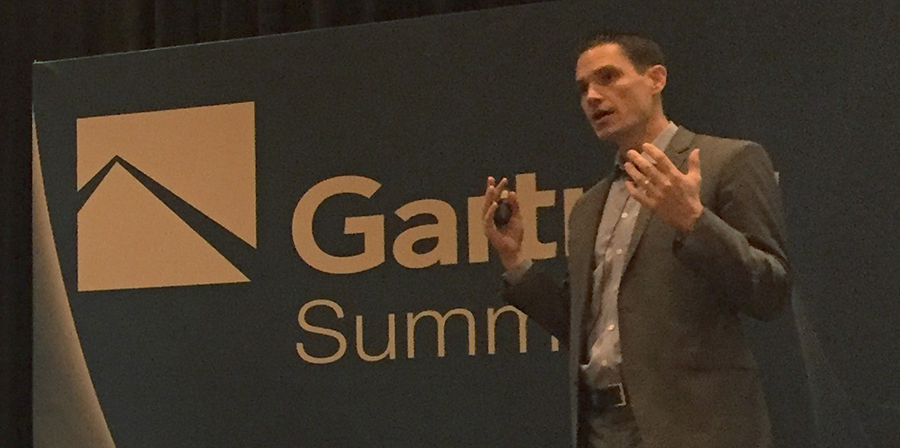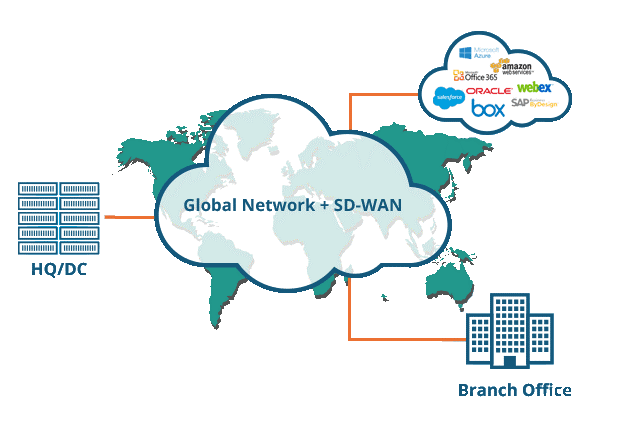Is it Time for a WAN Reset? Gartner Looks at SD-WAN: The Future of Enterprise Networks

“The WAN is a mess!” proclaimed Gartner Analyst, Andrew Lerner, during their recent Data Center Infrastructure and Operations conference held in Las Vegas, Nevada.
Lerner was the host of two major sessions focused on the network at the conference: The Enterprise Network Scenario and SD-WAN: Smoke and Mirrors.
The Complex State of Many WANs
 According to Lerner, enterprise networks are turning to complete disarray as many businesses continue building out their connectivity using legacy technologies, such as MPLS, while adding additional hardware at each location to maintain network efficiency.
According to Lerner, enterprise networks are turning to complete disarray as many businesses continue building out their connectivity using legacy technologies, such as MPLS, while adding additional hardware at each location to maintain network efficiency.
“In the past, if we had issues with our network, we added more bandwidth,” Lerner noted, “If latency was an issue, we added [WAN Optimization].”
“It’s time for a WAN reset.”
During his sessions, he was quick to note three key factors leading to the complex state of today’s enterprise network.
- Migration to Cloud and SaaS Applications
63% of session attendees said the cloud was a crucial part of their network. With many of today’s applications moving out of the corporate data center and into third-party cloud and SaaS environments, traffic flows within the network have drastically changed and become inefficient for application delivery. - Enterprise Traffic Dramatically Increasing:
Gartner revealed traffic within enterprise networks has doubled every 2.9 years. This workload increase has bandaged enterprises with routine practices such as incrementally adding bandwidth as a means to avoid network failure.Maintaining this status quo can be looked at as a method of risk aversion, but it can also lead to what Lerner called “vendor lock-in,” where enterprises are handcuffed by contracts to legacy technologies from providers. This can increase the cost of a network, and make it difficult for businesses of any size to be agile or flexible. - The Constant Deployment of Additional Hardware
The incremental approach to constructing a network has also led to a variety of optimization devices living at each office to maintain steady and consistent performance. This dramatically adds to the cost of a network and affects a company’s bottom line. Not only does a business have to pay for their high-quality bandwidth, but they also have to factor in multiple devices at the edge to optimize the applications and data running through it. This doesn’t even include the costs of staff you need for each location to maintain it all.
Will SD-WAN Come to the Rescue?

SD-WAN has become the 2016 ultimate buzzword in enterprise networking. That doesn’t appear to be changing in the near future. Gartner predicts by 2018, 40% of WAN edge infrastructure will be based on SD-WAN or something similar.
“There is no shortage of vendors carnival barking about SD-WAN,” Lerner said.
Some of the common features showcased by SD-WAN vendors include:
- Lightweight replacement for traditional WAN routers
- Dynamic distribution of traffic, based on applications
- Efficient use of connectivity and bandwidth, thus providing lower costs
- Increased visibility and security
Not All SD-WANs are Created Equal
Lerner was quick to cite many of the vendors in the space are “pure-play” devices. These are vendors who sell devices placed at the edge for efficient bandwidth use, increased visibility, and lower cost. Yet, they still require businesses to invest in traditional network infrastructure in order to have a fully-functioning network.
These edge devices also cannot improve latency, any data transfer issues involving distance, and not all of them include WAN Optimization with their service. Therefore, you may be stuck with purchasing additional devices and adding more complexity to your WAN.
The Path to SD-WAN Success
If your business is looking to renegotiate with a carrier or planning to migrate to a cloud or SaaS environment, now may be the time to consider SD-WAN for your network. Before you do, here are some things Gartner and Lerner recommend you look at before committing to one solution:
- Cost and Licensing
Take a look at your overall network architecture, and ensure you have the right solution to lower TCO. This includes how you pay for edge devices as well as the WAN itself. Many providers are looking at offering solutions that charge customers on a consumption level rather than a fixed bandwidth cost. This could not only help with savings, but also provide more flexibility and elasticity. Think “pay as you grow.”
- Cloud Gateways/PoPs
To solve the latency issue with SD-WAN, find a provider with a private network designed to solve the middle mile. Using a network of this caliber eliminates latency and solves the distance issue edge devices cannot solve by themselves.
- Application Awareness/Visibility
Make sure the solution provides your business with the visibility you need into the performance of applications and the network itself. There are vendors that provide software with their service to enable this visibility.
- WAN Optimization
If this feature is not included with your SD-WAN, you’re simply adding another device to your network and not improving the performance or delivery of your mission-critical applications.
The SD-WAN with a Private WAN
We agree with the points Gartner and Lerner suggest about SD-WAN. That is why we built our global SD-WAN, which is designed for large enterprises with locations around the world.
Aryaka’s global SD-WAN integrates all the benefits of SD-WAN and includes a global private network layered with WAN Optimization software. This combination eliminates latency and solves application delivery issues for enterprises globally.

Global enterprises access Aryaka’s solution through their local internet and connect to one of our 26 points of presence (PoPs) around the world. This enables them to be up and running on Aryaka’s private WAN within hours or days, compared to the months it takes for an MPLS deployment.
But there is much more to consider. If you would like to learn more about what SD-WAN features may be right for your business, download our latest white paper, “Top 5 SD-WAN Myths Busted”.







